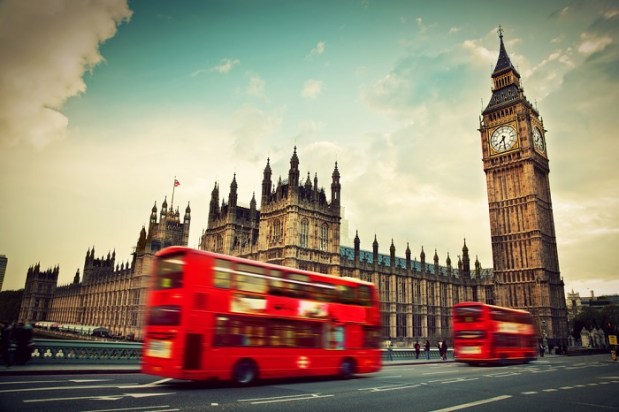Fox Decks Out London’s Double-Deckers With Beacons

In-store retailers are usually the ones people think of when they imagine the patient demographic just waiting for beacons to take off. However, if the magic of the technology rests in location-based marketing, pegging beacons to a specific retail location seems like hamstringing their potential.
That’s exactly why Fox has finally taken its beacon-based marketing plan for the next installment in its “Kung Fu Panda” movie franchise. The Drum reported that Twentieth Century Fox and Exterion Media have outfitted at least 500 buses with beacon systems and advertisements for “Kung Fu Panda 3.” When riders board one of the equipped double-deckers, decals, both inside and outside the vehicle, prompt them to download or open the Shazam app on their phones, which they can use to automatically receive trailers, bonus content and nearby showtimes as soon as the app opens.
While this might seem like a story of little consequence — a studio promoting a movie with a small tech pilot — Mike Wood, product and innovation director at Exterion Media, explained how it could revolutionize the way buses are used to interact with the consumers around them.
“This is a fantastic, engaging campaign that exemplifies the potential of beacons — something we’ve been championing for a long time,” Wood told The Drum. “Until now, pedestrians have been the predominant beneficiary when it comes to bus advertising, but now, we can directly reach commuters during the millions of bus journeys being made every month with relevant, timely and engaging content in an unobtrusive way.”
Chris Green, director of marketing for Fox, also explained how the beacons are being used to gain more insights into how U.K. consumers are interacting with the company’s content.
“What is also very attractive is that the technology will return accurate data on which audiences are engaging with the campaign, which will be valuable to both this and future campaigns,” Green told The Drum.
If an entire city’s worth of public buses outfitted with beacons seems like a modern retail marketer’s dream, London isn’t the only city in the world trying to upgrade its location-based marketing infrastructure. Japan Today reported that two of Tokyo’s busiest subway stations — Tokyo Station and the world’s busiest Shinjuku Station, which sees more than 3.6 million passengers daily — are getting self-guided navigational apps powered by beacon networks in both stations. East Japan Railways is putting out the app, which comes in both Japanese and English, to help hapless tourists find their way to the exit they want out of Shinjuku Station’s total 200.
While it’s more likely that municipalities will be more willing to pay for beacon infrastructure if the technology is put to use for the public good at first, transitioning these systems to also working for marketers — a la London’s buses — isn’t out of the question. Especially as cities look to cut down on costs and maintenance, splitting the upkeep of a beacon network and the rights to use those channels could appeal to both sides’ interests.
Tokyo and Shinjuku Station’s beacons will be around indefinitely, but Fox and Exterion’s public transit beacon experiment will run until March 11. And while Wood agreed that beacons, as they are now, can have great localized impact, the time will soon come when the tech all but begs to be rolled out nationwide or even internationally.
“We’ve been working toward this moment, which fully realizes our digital capability, for a long time,” Wood told The Drum. “With beacons, we are able to deliver engaging, informative and entertaining content directly to millions of Shazam users. Our ambition is to extend this capability across our national portfolio, which creates inspirational experiences for 92 percent of U.K. adults every week.”
Why not 92 percent of adults everywhere for the rest of retail history?
